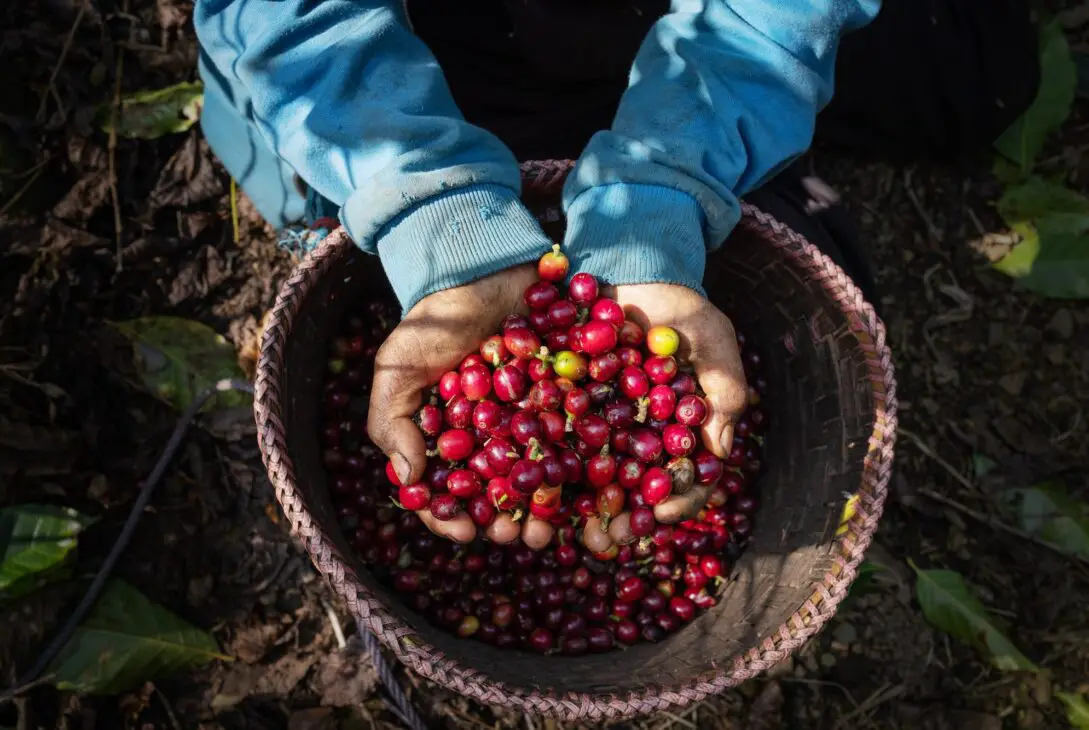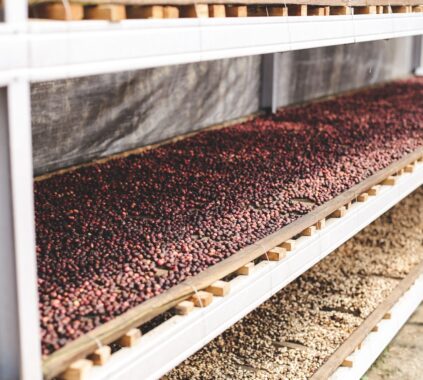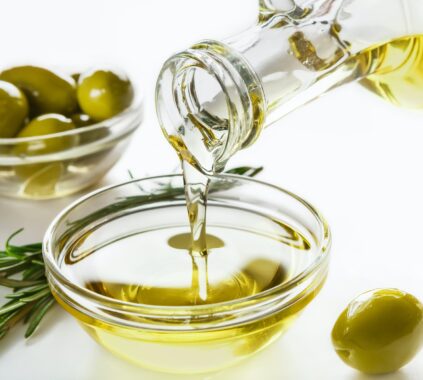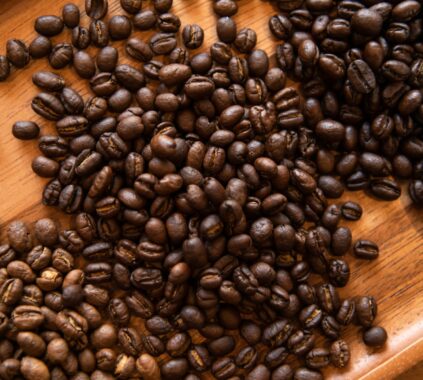Ah, coffee. That magical elixir that transforms us from groggy-eyed zombies to fully functioning human beings in just a few sips. But have you ever wondered how your daily java goes from a humble seed to the aromatic brew that jumpstarts your day? Join us on a whirlwind tour of the coffee-growing process, complete with fun facts, humorous anecdotes, and a newfound appreciation for your favorite morning pick-me-up.
Table of Contents
The Journey of a Coffee Bean
Planting the Seed
The coffee growing journey begins with a tiny seed, which is usually planted in large, shaded nurseries. Picture the seed as a shy introvert who needs a little encouragement before stepping into the limelight. After about six months of tender loving care, the seedlings are ready to face the world and are transplanted to coffee farms.
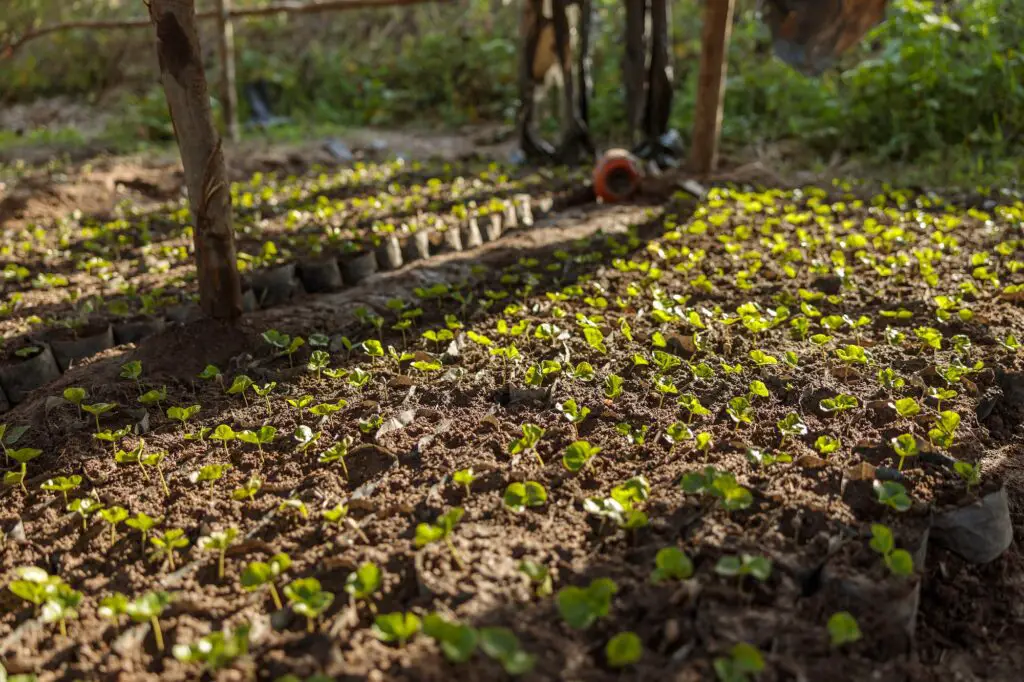
Growing the Coffee Plant
With plenty of sunlight, water, and affectionate pep talks from local farmers, the coffee plants will flourish. It takes about 3-4 years for the plant to mature, during which it will grow to around 6-12 feet tall. You might say that the coffee plant is the beanstalk of the beverage world!
Flowering and Fruit Development
Once mature, the coffee plant produces small, fragrant white flowers. These flowers are the life of the party, but their beauty is short-lived, lasting only a few days. As the flowers wither, they make way for the real stars of the show: the coffee cherries.
The Coffee Harvest
Picking the Cherries
When the cherries ripen to a beautiful shade of red, it’s time for the harvest. This is a labor-intensive process, as each cherry must be handpicked to ensure only the ripest ones are selected. Imagine a game of “Red Light, Green Light,” but with cherries instead of people.
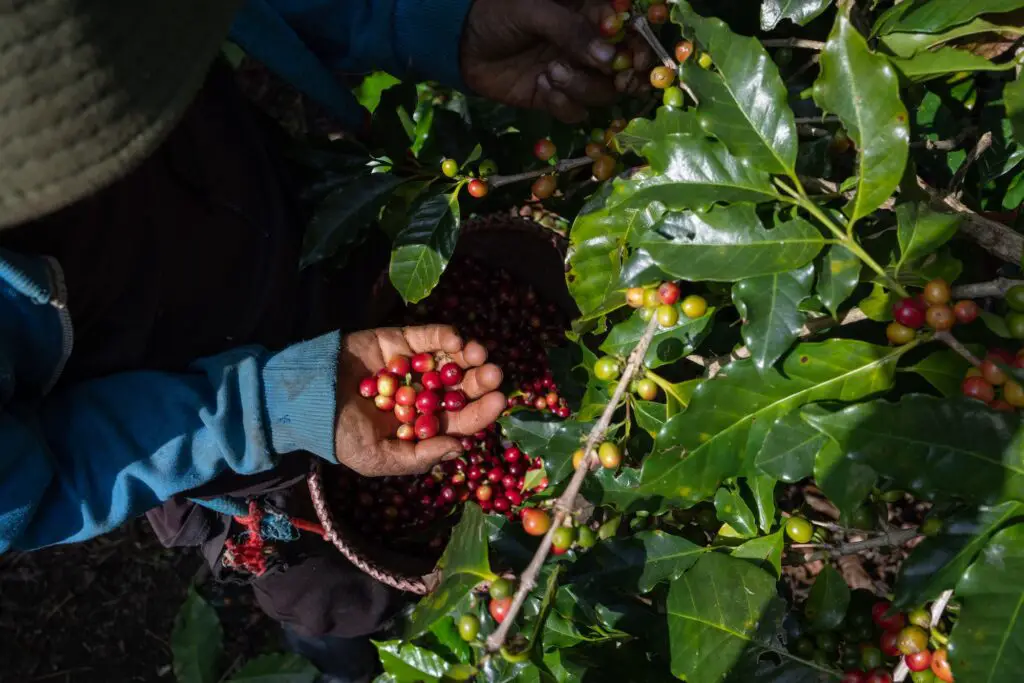
Sorting and Processing
Once the cherries are picked, they’re sorted by color and ripeness. Afterward, they undergo one of two processing methods: wet or dry. In the wet method, the cherries are soaked in water, while the dry method involves leaving them out in the sun. Think of it as the cherry version of a day at the spa.
Drying and Storage
Drying Methods
After processing, the beans need to be dried to the ideal moisture level of around 10-12%. This can be achieved through sun-drying, mechanical drying, or a combination of both. It’s like choosing between air-drying your hair or using a blow dryer, but for coffee beans.
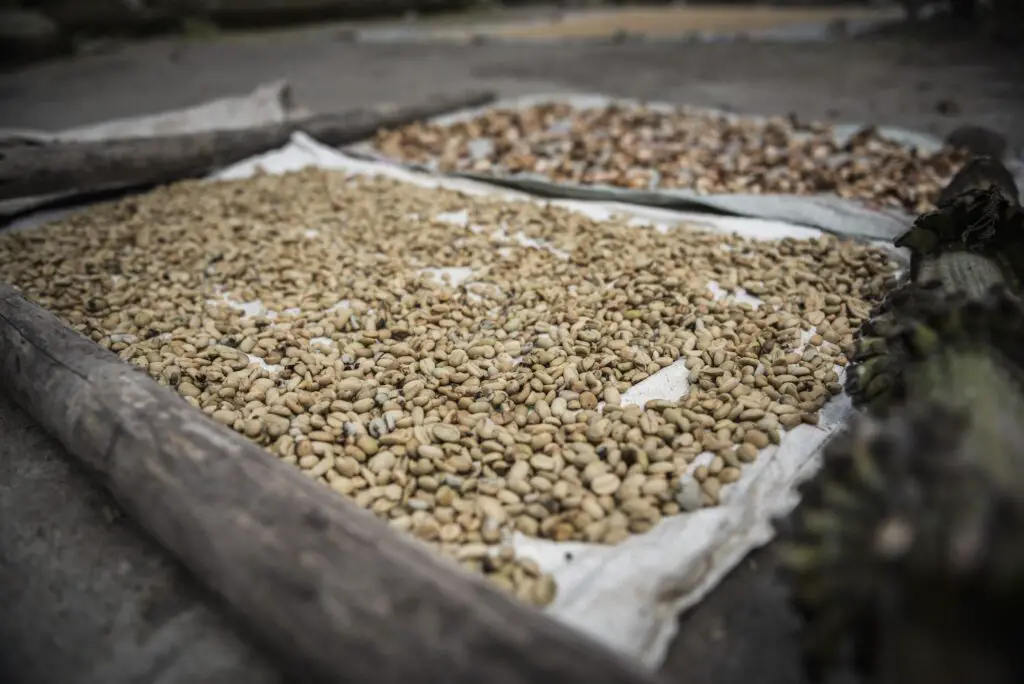
Storing the Beans
The beans are then stored in jute or sisal bags, where they await their destiny. They’ll soon embark on a journey to coffee mills and roasters worldwide, unaware of their soon-to-be status as heroes in the battle against drowsiness.
The Milling Process
Hulling
Before the beans can be roasted, they need to be hulled. This process removes the parchment layer (also known as the endocarp) surrounding the bean. Imagine it as the coffee bean’s version of a winter coat, which must be shed before it can show off its true potential.
Polishing
Polishing is an optional step where any remaining silver skin (a thin layer covering the bean) is removed. Picture it as the final touch-up before a big night out – not strictly necessary, but it never hurts to look extra polished.
Once the beans are hulled and polished, they’re graded by size and weight, then sorted for any defects. Think of it as a job interview for coffee beans, with only the best candidates making the cut.
Exporting the Beans
The beans are now ready to be shipped to roasters worldwide, eager to showcase their talents in your morning cup of joe. As they travel the globe, they may experience a little jet lag, but that won’t stop them from performing their duty.
Roasting the Beans
The Art of Coffee Roasting
Roasting is where the magic happens. It’s the process that turns the green coffee beans into the rich, aromatic beans we know and love. Roasting profiles vary depending on the desired flavor, from light and fruity to dark and bold. Picture it as a talent show, where each bean gets to strut its stuff and shine.

Grinding and Brewing
Once roasted, the beans are ground and brewed to create that heavenly liquid we call coffee. The grind size and brewing method can dramatically affect the taste, allowing for endless possibilities and variations. Just like a chef in a kitchen, you get to decide how you want to enjoy your cup.
The Importance of Fair Trade and Sustainability
Coffee growing is not only about delivering the perfect bean but also about supporting the farmers and communities involved. Fair trade practices and sustainable farming methods ensure that coffee production benefits everyone involved while protecting the environment for future generations. So, the next time you sip your coffee, take a moment to appreciate the hard work and dedication that went into creating that perfect cup.
The Fascinating World of Coffee Varieties
From the fruity Ethiopian Yirgacheffe to the bold Sumatran Mandheling, the world of coffee offers a diverse range of flavors and profiles. Each variety has its unique characteristics, making the coffee experience a never-ending adventure. So, go forth and explore the wide world of coffee – who knows what treasures you’ll discover?
Seed to Cup
From seed to cup, the journey of a coffee bean is a complex and fascinating process. It takes a village – or rather, a world – to produce the perfect cup of coffee, and each step along the way contributes to its unique flavor and aroma. So, the next time you take a sip of your favorite brew, remember the incredible journey it took to get there and give a little nod of gratitude to the farmers, pickers, millers, roasters, and baristas who made it all possible. And now that you know the story behind your cup of coffee, go forth and share the tale with fellow caffeine enthusiasts. After all, a good story, like a great cup of coffee, is best enjoyed when shared with others.
FAQs
Q1: How long does it take for a coffee plant to produce its first harvest?
A1: It typically takes about 3-4 years for a coffee plant to mature and produce its first harvest.
Q2: What are the two main processing methods for coffee cherries?
A2: The two main processing methods for coffee cherries are the wet method (soaking the cherries in water) and the dry method (leaving them out in the sun).
Q3: How does the roasting process affect the flavor of coffee beans?
A3: The roasting process develops the flavor of the coffee beans, with different roasting profiles resulting in variations in taste, from light and fruity to dark and bold.
Q4: What is the importance of fair trade and sustainability in coffee production?
A4: Fair trade and sustainability are important in coffee production to ensure that farmers and communities benefit from their work, while also protecting the environment for future generations.
Q5: Are there any differences in taste between coffee varieties?
A5: Yes, there are significant differences in taste between coffee varieties, with each offering unique flavor profiles and characteristics. This diversity allows for a wide range of coffee experiences to suit individual preferences.
Daily Demitasse is a participant in the Amazon Services LLC Associates Program, an affiliate advertising program designed to provide a means for sites to earn advertising fees by advertising and linking to Amazon.com. We also participate in other affiliate programs which compensate us for referring traffic.


